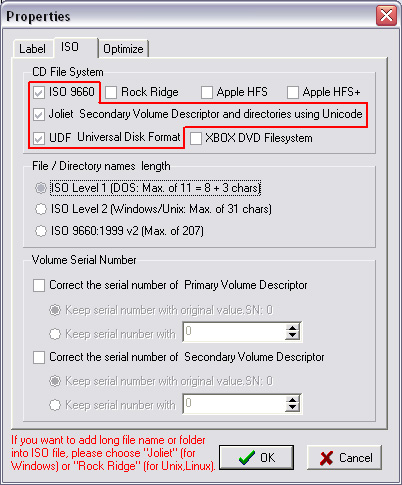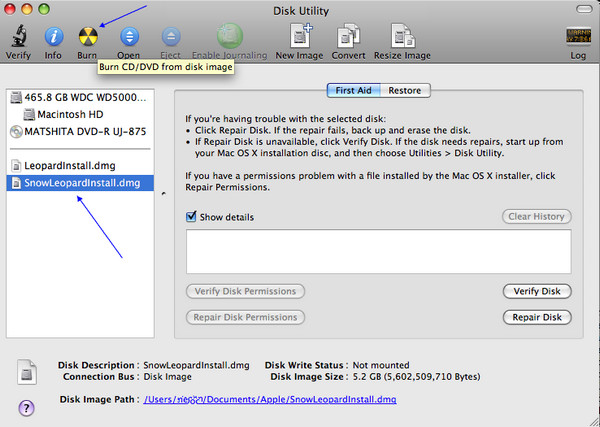- Linux doesn't much care for DMG files. Sure, it'll play nice with them. But we don't just want to play nice. We want to copy a DMG image to a USB drive and keep it as verbatim as computationally possible.
- Method 3: How to Burn a DMG File to USB in Linux. The process of burning a DMG to USB in Linux is a little more complicated since it requires converting the file to an ISO before burning it to a drive. It also requires command line executions, but if you own a Linux machine you may already be familiar with command line work.
Mount the file, copy your program: Now you can create a mount point, mount your dmg file there, copy your program files to the mounted dmg files and then unmount it all: mkdir -pv /mnt/tmp sudo mount -o loop /tmp/myapplication.dmg /mnt/tmp sudo cp -av myprogram /mnt/tmp sudo umount /mnt/tmp. Run PowerISO, and insert a blank or rewritable optical disc in the drive. Click 'Burn' button on toolbar or select the 'Tools Burn' Menu. PowerISO shows ' DMG Burner ' dialog. Click 'Browse' button to select the DMG file you want to burn. Mar 10, 2009 I was able to rip MacOS 10.5 as a.dmg file a while back before the original disc got lost. Now it resides on our Linux box (Fedora 9) How to I burn this image onto a DVD so its useable again? I've read similar post/threads on other sites that advise to convert to.iso format but I've also read the resulting.iso file is substantially larger.
This guide covers the verbatim copying of a DMG image to a USB thumb drive using only Linux (no need to find a Mac). Download neat video 3.4 full version home depot. If the DMG was intended to be bootable then the resulting USB will be bootable.
Convert to ISO
Linux doesn't much care for DMG files. Sure, it'll play nice with them. But we don't just want to play nice. We want to copy a DMG image to a USB drive and keep it as verbatim as computationally possible. In order to do this, we're first going to convert the image to a format that's a little more universal: ISO.
We're going to use dmg2img to convert the DMG to an ISO image. If you already have dmg2img, great. If not, install it using your distribution's native package management system.
On Ubuntu, you'd do it like this: Artistic license for ipad.

Once you have dmg2img installed, begin converting the DMG file:
After a few minutes, you should have a second file called image.img. This file can be used like an ISO. All we have to do is change the extension. Use mv to do this:
Make sure you specified 'image.img' and not 'image.dmg'! Working with three different file extensions can get kind of confusing.
Ok, so we should now have a file called 'image.iso' which is just 'image.img' with a different extension.
Now we want to write 'image.iso' to our USB drive. I used 'lsblk' to figure out how the system was identifying my drive. The lsblk command lists all disks connected to the system. It's usually pretty easy to figure out which disk is which based on their size. Just be sure you're sure. This process is going to overwrite the target disk with the contents of our DMG image file. Any preexisting files on the target disk will be lost. As usual, make sure you have a proper backup.
Make sure the target drive isn't mounted. Unmount the drive with your distribution's GUI.
Or you could just unmount it from the terminal:
Linux Burn Dmg File For Mac
Most systems seem to mount external drives in /media. Sometimes the drive might be mounted in /mnt or elsewhere.
Write the ISO image to the USB drive like this:

Once you have dmg2img installed, begin converting the DMG file:
After a few minutes, you should have a second file called image.img. This file can be used like an ISO. All we have to do is change the extension. Use mv to do this:
Make sure you specified 'image.img' and not 'image.dmg'! Working with three different file extensions can get kind of confusing.
Ok, so we should now have a file called 'image.iso' which is just 'image.img' with a different extension.
Now we want to write 'image.iso' to our USB drive. I used 'lsblk' to figure out how the system was identifying my drive. The lsblk command lists all disks connected to the system. It's usually pretty easy to figure out which disk is which based on their size. Just be sure you're sure. This process is going to overwrite the target disk with the contents of our DMG image file. Any preexisting files on the target disk will be lost. As usual, make sure you have a proper backup.
Make sure the target drive isn't mounted. Unmount the drive with your distribution's GUI.
Or you could just unmount it from the terminal:
Linux Burn Dmg File For Mac
Most systems seem to mount external drives in /media. Sometimes the drive might be mounted in /mnt or elsewhere.
Write the ISO image to the USB drive like this:
Replace 'X' with the appropriate letter. For example '/dev/sdb'. Be sure to use the drive directly and not a partition within the drive. For example, don't use '/dev/sdb1'.
This will probably take a little while to complete. I'm using a Kingston DataTraveler DTSE9 and it took about 24 minutes 30 seconds to write 4.9GB.
Your new USB stick should now be bootable, assuming that was the intended purpose of the DMG.
Burn Dmg File Nero
I just bought my first MAC G4 Dual 450 from a friend (who bought a new G5). He gave me .dmg files of the panther disks 1-3 and the X code as well. I have now coastered about 10 disks trying to figure out how to burn a bootable CD so I can reinstall Panther to 2 40G disks (internal) instead of the 1 20G disk I got with the machine. I also have a 160G external Firewire disk and a Plextor PX-716 DVD/CDR burner.
I can't seem to get this to work right. I am a Linux user and can burn bootable CD's from image files all day long, but this is just killing me and getting rather expensive.
I have made sure to mount the dmg file for each of the 4 disks, tried just burning a data cd, then burned to an image and burned the image to cd, tried a mac volume, nothing seems to work. Yes I have made sure to hold down the C key after rebooting and putting in the new blank HD's. Also tried to option key to see what bootable device is there and with the 2 new blank HD there is nothing. All I see if I hold down C is a blue screen with a little folder with the MAC picture and then a question mark flashing back and forth...I am using Roxio Toast Titanium 6.0.3 to try to burn the CD's
Can someone please, please help me so I can use my 2 new 40G HD's?
Thank you VERY much in advance
Rockstar/Michael

